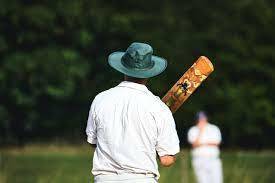
SITTING LISTENING TO the wonderful sound of leather on willow usually means that summer is on its way. Cricket is a great game, worshipped by many and can be played from an early age through to the ‘Old Boy’s’ yearly get together. And while most players manage their careers without much injury, there are a good few who end up seeing physiotherapists along the way.
I learnt recently that the game has 35 different fielding positions. Each of these requires similar but different skills; strength and accuracy to throw and catch at different distances and angles, squatting and reaching ability, sprint and stability. Bowling alone needs a lot of different skills. The ability to sprint, to stop, to break the run to land the ball at the bowling crease while using enormous extension, rotation and flexion forces in the body to bowl accurately and effectively. When batting, much time can be spent waiting to take one’s turn at the crease, then suddenly be expected to hit fast balls, sprint to claim runs and stop to not outrun fellow batsmen. All this puts a lot of strain on the body.
We see a number of cricket related injuries in clinic. These generally affect the shoulder, elbow, knee and ankle and very often, especially in school age players, the back. As always, most sports injuries happen because of overloading tissue. This can mean playing too quickly, too often and for too long. And then there is the spike as seen in the annual village match; those who play just once a year are often prone to injury, for obvious reasons.
The injury most often seen is in the lower back, particularly for youngsters. A growth spurt in young people happens often at the same time as they are at their peak of playing school and club sport which is not great timing. The particular injury seen is a stress fracture in the lumbar spine. This is brought about by a fast and repetitive backwards lean action taken when bowling, putting strain through the vertebrae. The treatment is cessation of play, core type strengthening and rebuilding carefully on the return to play. Similar injures are also seen in tennis because of the extension in a top spin serve and football with extension at the start of the kicking action.
For reference, in shoulder injuries, a study in 2001 showed that those who bowled more than 188 deliveries a week were more likely to suffer shoulder injuries than those who bowled between 123 and 188 balls, which makes sense. But conversely those who bowled fewer than 123 deliveries also had a higher incidence of injury. This is likely Knock on wood Summer to many means cricket but that can put quite a strain on the body. Physiotherapist Sarah Babbs suggests way to combat this to be because these players may not have built up the skill set or were only bowling occasionally without building resilience. Elbows too can be a problem with the repetitive strain.
Knees and ankles can suffer with tendon problems and occasionally bony changes where the forces are directed into the attachments of the tendon to bone rather than being dispersed well. Bowlers are most likely to be affected here because of the sudden stop they have to make at the crease. Knee ligament injuries and hamstring strains are common here too.
All is not lost though. We know more about prevention of injury now. In all movements we make, forces are generated. We need to effectively create these forces, share them through the body and then disperse those forces so they don’t cause injury. Strength, balance, mobility and awareness of the body in space (proprioception) can all be trained and will have an impact on injury prevention as well as improving the skills and quality of play.
Interestingly there is evidence of the importance of children playing a variety of sport. It has been found that these children do better in skill and injury terms as they progress than those who pursue one specific sport early on. Limiting the hours children play sport each week is important and Sport England have strict limits on the recommendations for different sports at different ages. Recovery time and rest, good nutrition and sleep as always are important for adults and children alike. So as the summer progresses, enjoy the languid days of watching cricket and keep the body well prepared for your time at the crease.



